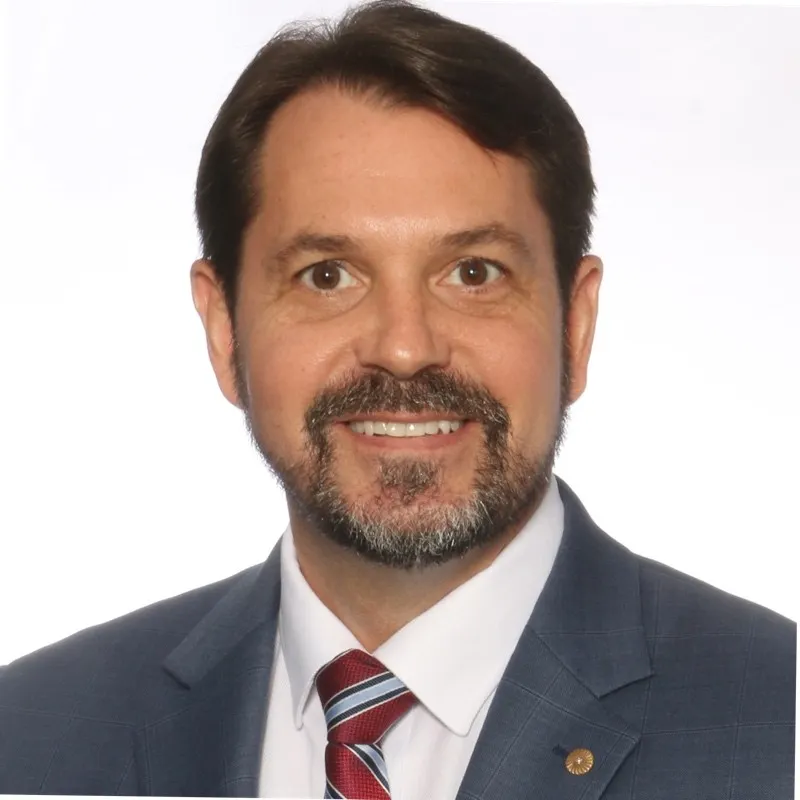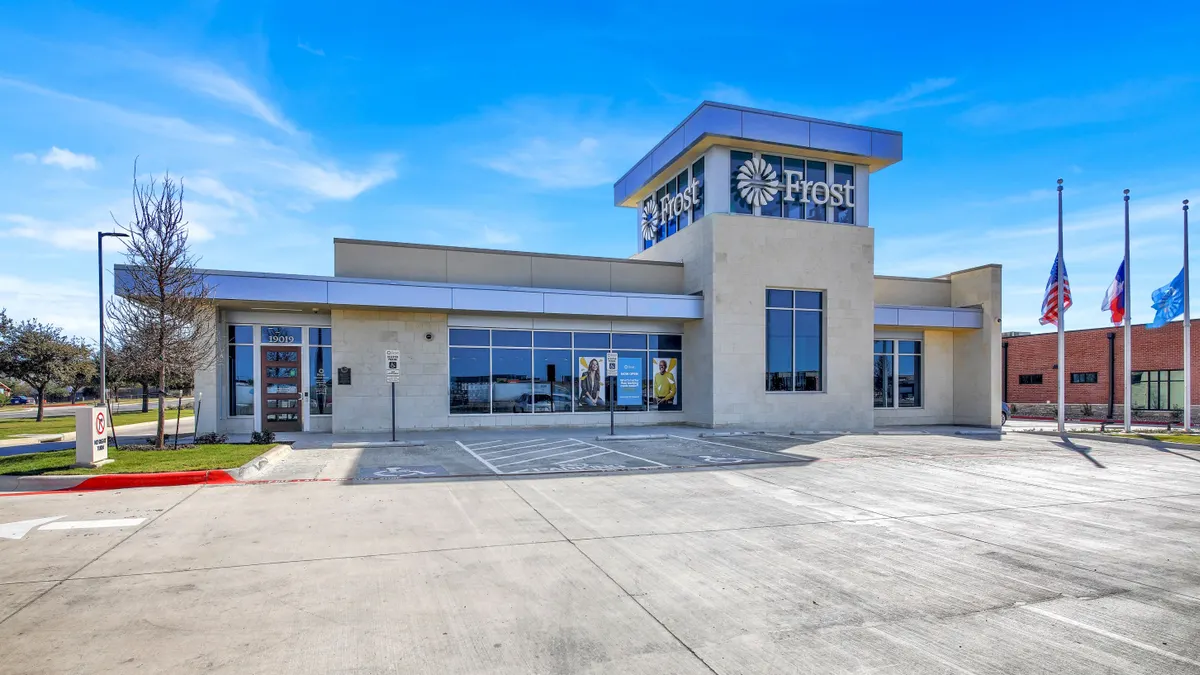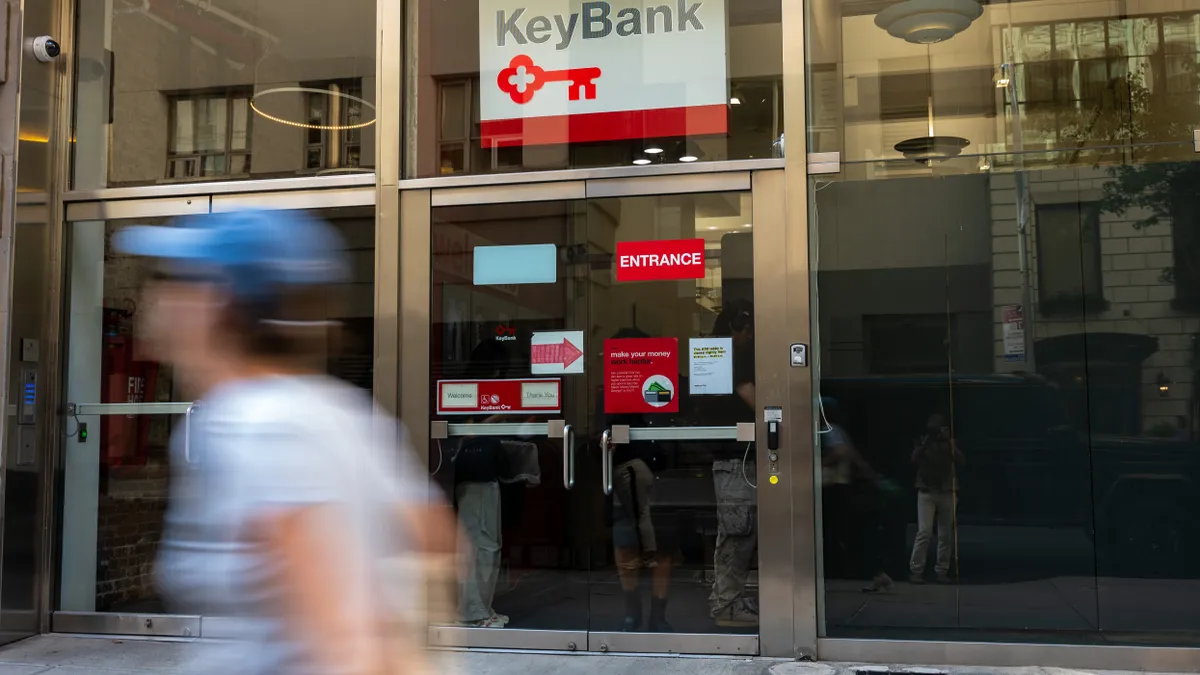When Dan Geddes interviewed at Frost Bank nearly three decades ago, he met with people who’d been at the bank for 28 years – a stark contrast to other banks where he interviewed, whose employees had far shorter tenures.
Geddes himself has now been at the San Antonio-based lender for 28 years and, at the beginning of the year, filled the chief financial officer seat vacated by Jerry Salinas, who retired at the end of 2024.
“I remember thinking, ‘I've got to find out why people stay here so long,’ and now I'm that person that's been here forever,” said Geddes, who comes to the CFO role by way of the commercial bank, rather than accounting or finance. “It just doesn't happen very much anymore in most industries and most companies.”
To Geddes, it speaks to the culture of the 157-year-old institution, and preserving that culture as the bank has expanded across the state is a top priority, he said during a recent interview.

“We are that stable bank in Texas,” he said.
Amid recent deadly flash flooding, parts of Texas undoubtedly are seeking stability.
To that end, the lender’s Hill Country branches will direct a $500,000 grant from the Frost Bank Charitable Foundation to the Community Foundation of the Texas Hill Country’s Kerr County Flood Relief Fund and other local flood-relief efforts, the bank said Tuesday.
Communities in the county, including Kerrville, Hunt, Ingram, are among the hardest hit after torrential downpours last Thursday sent the Guadalupe River surging 22 feet in flooding that killed at least 110 people, while as many as 173 more remained missing as of Wednesday.
“There are so many of us at Frost who know someone who either was affected by the disaster or who is connected in some way with the affected people and communities,” Kevin Thompson, the bank’s Hill Country market president, said in a news release. “We’re heartbroken by the devastation, and our hearts go out to the families of those who died or were injured.”
Frost is making emergency disaster loans available to borrowers, and contacting customers in affected areas to discuss ways to temporarily defer loan payments if needed. Frost has a branch in Boerne – in neighboring Kendall County, which also saw flash flooding last week – and is building new locations in Kerrville and Fredericksburg.
Frost’s operations were unaffected and the $52 billion-asset bank’s branches remain open, a spokesperson said.
Consistency and dependability have been key to Frost’s identity, Geddes indicated.
When other banks have taken more aggressive pricing structures during robust economic times, Frost has lost some deals, he said, “but we more than make up for it when there is uncertainty.” Prospects were much more willing to talk to Frost during tougher times, when others had backed away, Geddes said.
In pursuing organic growth, CEO Phil Green “has shown the willingness to make investments to help support long-term growth, instead of being overly focused on quarterly earnings or chasing the flavor of the month in banking,” D.A. Davidson analyst Peter Winter wrote in a recent note.
The bank is keeping its head down on its expansion strategy, and remains definitively uninterested in M&A, Geddes said.
“We get to recruit the bankers that want to be with us, not the ones that we inherited,” Geddes said. “We get to bring in customers that chose us, not that we bought and we're trying to maintain. And we get to choose the locations; we’re not stuck with the locations of the bank that we bought.”
Frost also maintains better control of its culture and avoids the distraction of systems integrations that acquisitions require, he asserted.
Although the bank may someday pursue expansion outside Texas as it inches toward $100 billion in assets, Geddes said Frost has plenty of room to grow within the state.
The bank is only scratching the surface in the state’s biggest markets, Houston and Dallas, in terms of deposits, Geddes said. In Houston, Frost has about 5% of bank branch share, but only 2.5% deposit market share; in Dallas, Frost has a 3.6% branch share and about 1% deposit market share, Geddes said. By comparison, Frost has a 10% branch share and 27% deposit market share in San Antonio and a 9% branch share and 25% market share in Corpus Christi, Geddes noted.
Frost is “planting trees, not corn,” and the expansion strategy requires patience, bank executives have said. The bank has close to 200 branches across the state. The average age of new branches in Houston is about five years, while Dallas is about two years and Austin – where the bank said in 2023 it planned to double its branch presence – is less than one. After four years, the bank generally starts reaping what’s been sown, Geddes said.
In most of Frost’s markets, money center banks have about 50% or more of the market share, he said. Frost gets about half of its new commercial relationships from those banks, seeking to compete by focusing on customer service, personal touch and the ability to talk to decision-makers.
Frost also recruits experienced talent from those big banks and smaller lenders, but is less interested in acquiring teams of bankers.
“We don’t look to bring over teams. We find that that can create little subcultures within your organization,” he said.





















